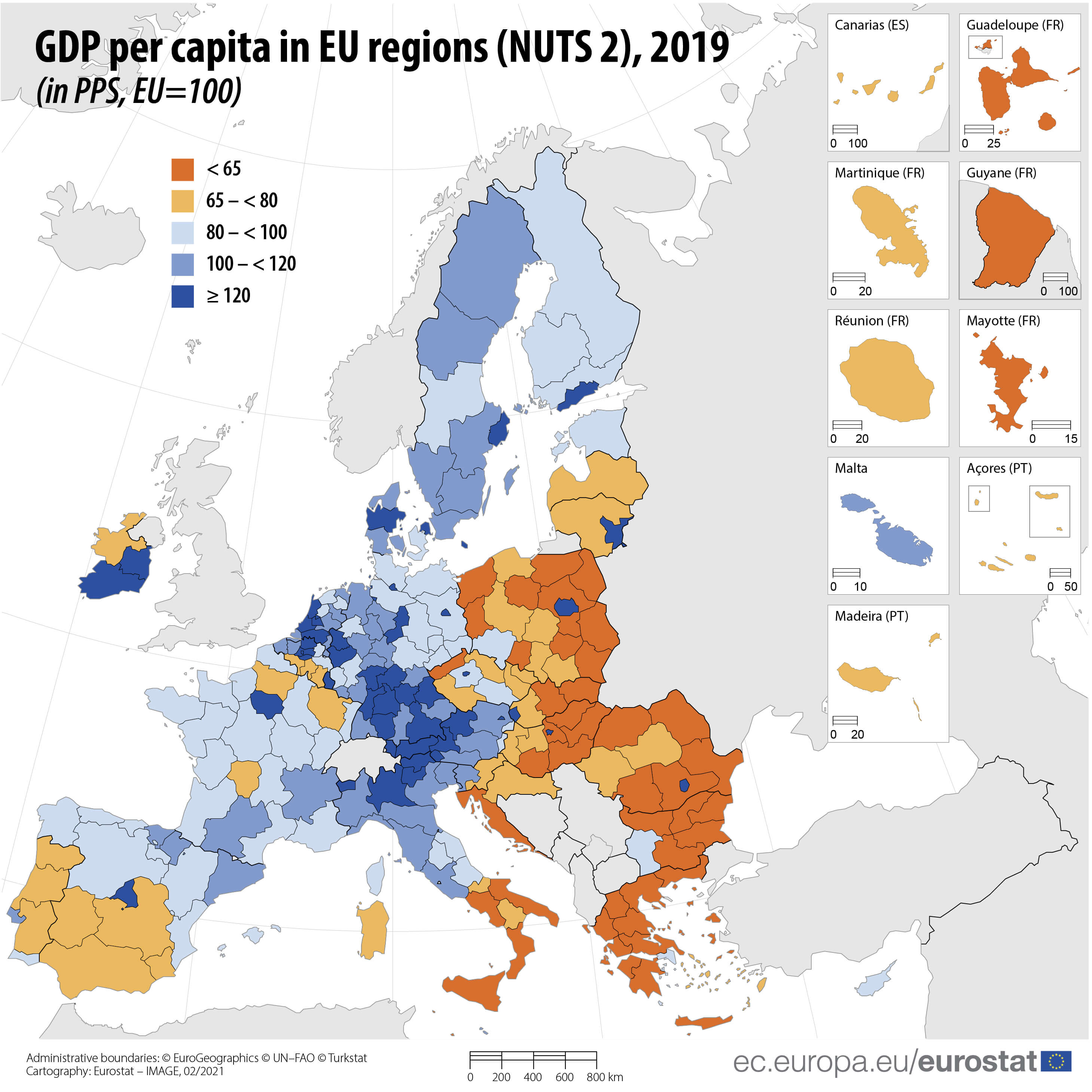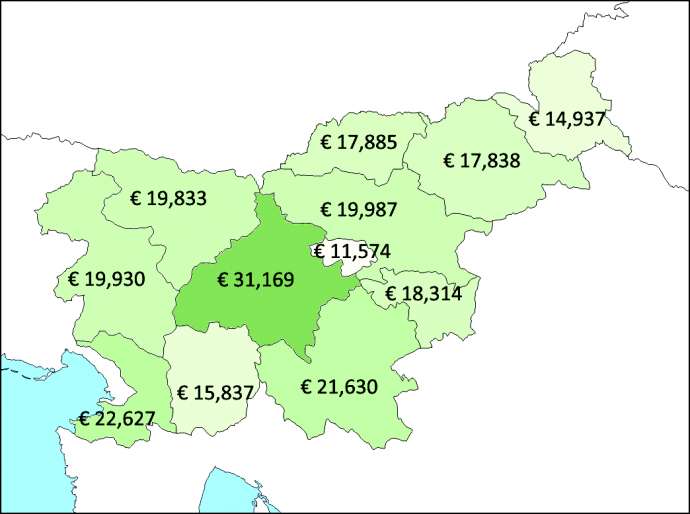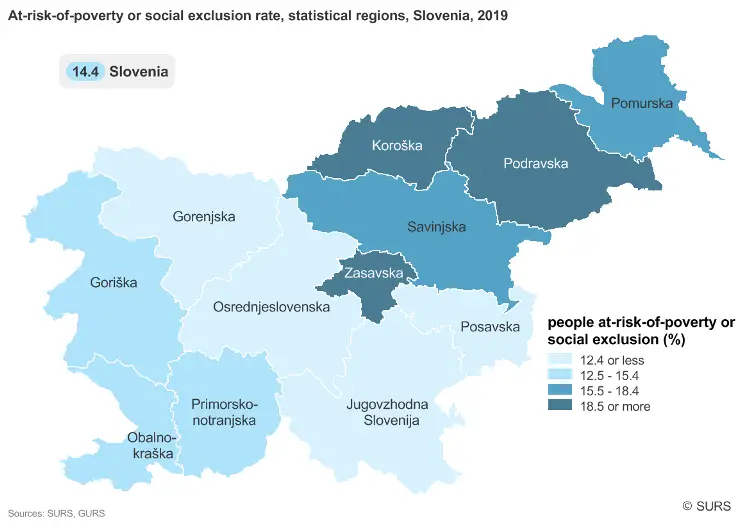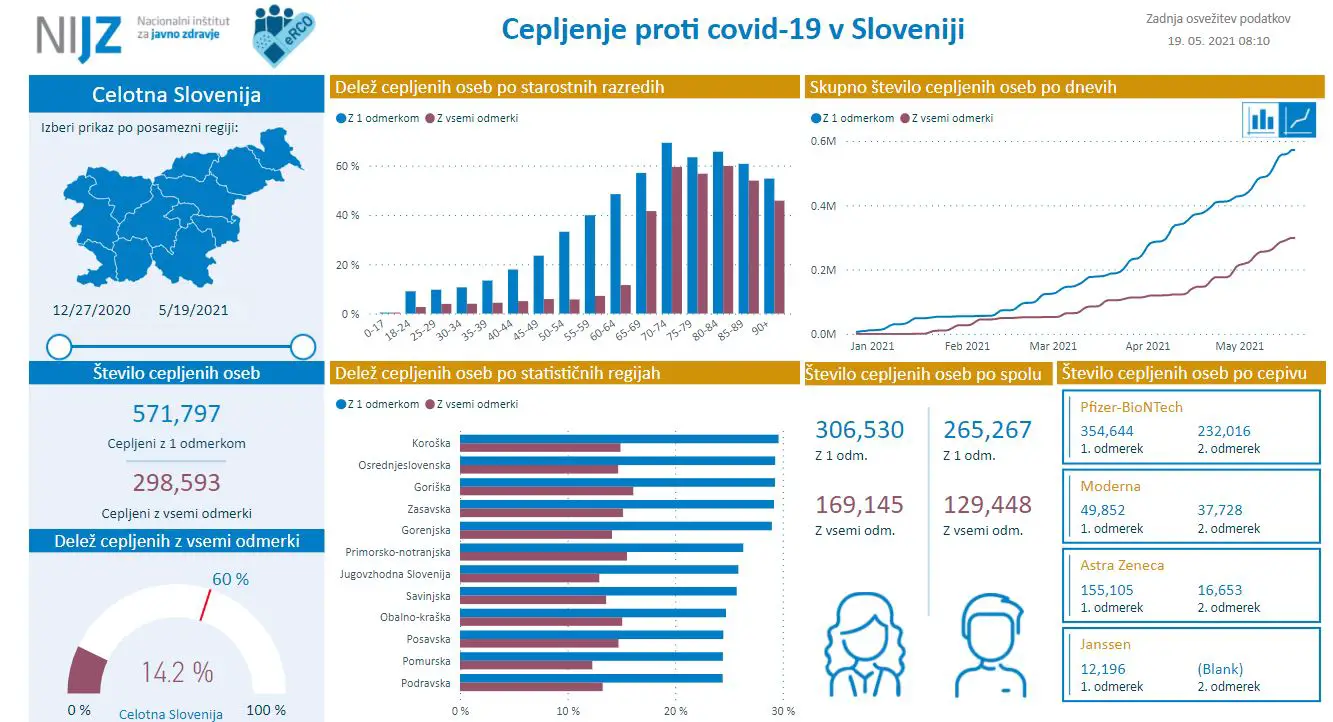Lifestyle
STA, 26 May 2021 - Godibodi, a festival of world and popular music that was launched in 2008, will get under way at Ljubljana Castle on Wednesday. A limited number of visitors will be able to indulge in eight live concerts over the course of four nights to discover up-and-coming Slovenian music artists. The festival will be live-streamed as well.
"Four nights will feature eight diverse concerts with three album premieres and five premieres of new music projects, two of which are festival productions, one is a project by Samo and Barbara Vovk and one is the latest project by excellent vocalist Metod Banko," said Janez Dovč, the artistic director of the festival.
The opening acts are guitarist Blaž Mencinger with a blend of pop and jazz tunes, and singer and guitarist Eva Hren, whose performance will be rooted in genres ranging from world music to jazz.
The second night will feature a duo, guitarist and singer Samo Vovk and violist Barbara Grahor Vovk, who perform a spectrum of genres; from jazz, funk, fusion to popular, classical and folk music. Their project 2 + 3 will include a jazz trio and some improvisation.
This will be followed by award-winning singer-songwriter Robert Petan, who will present his debut album.
Folk music will dominate the third night, when two groups will present their new albums. Marko Banda is a group from the north-eastern Prekmurje region, so their repertoire also includes some Hungarian songs, while the group Vruja from the Istria region performs in Slovenian, Italian and Croatian dialects.
The final night will feature two emerging Slovenian musicians - singer and guitarist Metod Banko and singer Tomaž Hostnik.
PROGRAM:
26. 5.: Blaž Mencinger, Eva Hren & Goran Rukavina Quintet
27. 5.: Samo and Barbara Vovk, Robert Petan
28.5.: Marko banda, Vruja
29.5.: Metod Banko, Tomaž Hostnik & Nerodnozabavni ansambel
Listen to radio.godibodi.si or visit the website for tickets and more
STA, 22 May 2021 - Police are investigating reports about shots being fired in Ljubljana's old down on Friday evening. The incident happened near the Mini Teater [sic] theatre and the Jewish Culture centre. According to the information gathered so far, nobody was injured.
Police were informed about the incident at around 9pm last night by a citizen, the Ljubljana Police said. Media reported that about six shots were fired, but police have not confirmed this.
Public broadcaster RTV Slovenija reported last night that the incident occurred near the Mini Teater theatre, where a play was under way at the time, and the Jewish Culture centre. There was panic on the street but according to reports nobody was injured.
Police have found the fired cartridge cases and are now checking which type of weapon was used. They do not have a suspect yet, but an investigation is under way.
STA, 21 May 2021 - Slovenia recorded 331 new cases of coronavirus on Thursday, down significantly from the week before and the lowest weekday figure since Easter. The test positivity rate was 8%. Three persons died, the latest government data show.
Hospitalisations dropped significantly, to 348, but the number of patients in intensive care rose by one to 111.
The 7-day average of daily new cases fell to 372 from 384.
By yesterday over 608,000 people had received a single shot of a coronavirus vaccine, just over 35% of the adult population, and almost 314,000 were fully vaccinated, 18% of the adult population.
STA, 21 May 2021 - Restrictions on public events have been significantly eased even as Slovenia formally remains in tier yellow, after the government decided late last night to loosen attendance caps and open the convention industry.
Starting today, the number of participants at sports or cultural events is no longer capped, it depends on capacity.
Indoors, there must be at least one empty seat between each spectator and masks are mandatory. Outdoors there has to be a metre's distance between them at a minimum.
In libraries, archives, museums and galleries, the limit is one visitor per ten square metres.
As of Monday, the convention industry may reopen. Staff must be tested and visitors are allowed provided they have been tested, vaccinated or have recovered from Covid-19.
The limit for visitors will be one per ten square metres.
STA, 18 May 2021 - Slovenian cities are mostly below international average when it comes to the use of illicit drugs, with the exception of ecstasy levels in Ljubljana and amphetamine in Velenje, an international study based on wastewater analysis for 2020 has shown.
The study, released by the European Monitoring Centre for Drugs and Drug Addiction, in cooperation with the SCORE network, involved 99 cities in 27 countries with a total population of 50 million, including six Slovenian cities or urban areas.
According to information provided by the Jožef Stefan Institute (IJS), which coordinates the study in Slovenia, Ljubljana recorded the highest levels of biomarkers of cocaine, ecstasy and methamphetamine in its wastewater, while Velenje had the highest level of traces of amphetamine among the six Slovenian towns included in the study.
All average levels in the Slovenian urban areas were below the SCORE average, with the exception of MDMA or ecstasy in Ljubljana. The biomarker of cocaine, BE, was just below the average in Ljubljana and Koper.
Compared to European and world capitals, Slovenian cities rank in the upper half of the list of all the cities included in the study when it comes to the levels of benzoylecgonine, the biomarker of cocaine, in their sewage water, while they rank in the lower half in terms of other biomarkers.
Two exceptions are amphetamine in Velenje, in the mid-north-east of the country, and MDMA in the capital Ljubljana, which the IJS notes rank in the upper half of the range.
The analysis has also shown that cocaine and cannabis are the most widely used, with the cannabis leading by the number of doses.
This is the fourth time that Slovenia and Ljubljana have been included in the study. To make out reliable trends, at least five years of monitoring would be needed, although the IJS has detected some specific temporal trends in the use of certain drugs for each Slovenian urban area involved.
Compared with the year before, the use of illicit drugs in Ljubljana declined last year, with the exception of MDMA, the use of which increased. The same trend is observed for cocaine and cannabis over the four years with a general declining trend. So has the use of amphetamine decreased, while the use of methamphetamine was increasing until 2019 before falling in 2020.
The Domžale-Kamnik urban area in central Slovenia and Maribor, Slovenia's second largest city, took part in the study for the third consecutive year. Last year Maribor recorded somewhat lower levels of illicit stimulants but somewhat higher levels of cannabis compared with the year before.
Domžale and Kamnik also recorded a decline in traces of cocaine, amphetamine in their wastewater, as well as comparable levels of MDMA and increased levels of methamphetamine and cannabis compared with 2019. Over the past three years, there is a falling trend for amphetamine and an increase in the use of cannabis.
Koper, Novo Mesto and Velenje were included in the analysis for the second time. Koper saw a drop in the use of all types of the monitored drugs, with the exception of methamphetamine, whose levels were flat. Lower levels of stimulants were also detected in Novo Mesto (SE), and comparable levels in Velenje.
You can find the full report in PDF and interactive forms here
STA, 19 May 2021 - A quarter of residents at the minimum have had one dose of a vaccine against Covid-19 in all Slovenia's regions, Marta Grgič Vitek, the national vaccination coordinator, said on Wednesday. In some regions the share is nearing 30%.
The number of vaccine doses delivered to Slovenia has been rising. The Pfizer vaccine is the one that has topped the supplies so far, accounting for some two thirds of all the deliveries, whereas the AstraZeneca doses accounted for roughly a quarter.
Altogether, slightly over a million doses have been delivered so far. A total of 870,000 vaccine shots have been administered, Grgič Vitek of the National Institute of Public Health (NIJZ) told today's coronavirus briefing.
The gap between the two figures is a result of different timelines of deliveries and vaccinations, among other things, she added.
Vaccination rates in age groups above 70 years are relatively high. The 60-69 age group has an almost 50% vaccination rate, but there is still a lot of room for improvement in the 50-59 category, she said.
Region-wise, the rate varies. The regions doing best are close to hit the 30% mark when it comes to the first dose vaccinations.
Those who have recovered from Covid-19 are advised to get a jab as soon as they are out of quarantine, and not after six months as was initially recommended, Grgič Vitek said.
She explained that the delay was recommended when the availability of vaccines was very limited.
If more than eight months have passed since the onset of the disease or if the person is immunocompromised, a full vaccination is necessary.
If one gets Covid-19 after receiving the first dose, they should be administered the second within six months since they first developed symptoms, she said.
She believes the third dose for those who were vaccinated at the very start of the rollout is not likely to be recommended ahead of autumn.
According to NIJZ, 571,797 people have received the first dose and 298,593 have been fully vaccinated, representing 27.2% and 14% of the population, respectively.
See lots of vaccination data, in Slovene, here
STA, 19 May 2021 - Slovenia's entry to the 2021 Eurovision song contest, a power ballad by Ana Soklič entitled Amen, has not made it to the competition's final. Soklič failed to secure enough points in Tuesday's semi-final held in Rotterdam.
A total of 26 entries will vie for the Eurovision victory in Saturday's final: 20 songs picked in both semi-finals plus those who are automatically pre-qualified for the Grand Final, the so-called Big 5, France, Germany, Italy, Spain and the UK, and the Netherlands as the host country and latest Eurovision winner.
Soklič, who was chosen to represent Slovenia this year as she did not get the chance to do that in 2020, sang the song in English.
Afterwards, the singer told the press she still stood behind her song as she wrote music that survived the test of time.
"I'm glad you were with me and I hope you'll stay with me going further! Eurovision was a huge thing, but now my journey continues and it'll be filled with music as much as possible," she said.
The inspiration for Amen is life itself, Soklič said at the entry's presentation in February. She co-wrote music along with Žiga Pirnat and Bojan Simončič and lyrics with Pirnat and US lyricist Charlie Mason, whose credits include global hits as well as the 2014 Eurovision winning song Rise Like a Phoenix, performed by Conchita Wurst.
The production of Amen also included the RTV Slovenija Symphony Orchestra and an accompanying choir led by Dorian Holley, who was one of Michael Jackson's backing vocalists. The vocals for the song were recorded in EastWest Studios in Hollywood with acclaimed record producer Tony Maserati on hand.
Slovenia was first represented at Eurovision as an independent country in 1993. Since then, the country has never failed to take part except for 1994 and 2000. The country's best result to date is 7th place, both in 1995 with Darja Švajger and in 2001 with Nuša Derenda.
STA, 18 May 2021 - Student self-testing will be launched next Monday, but only for some secondary school students for now, Health Minister Janez Poklukar said on Tuesday. Others, including older primary school pupils, could start taking swabs a week later or as soon as possible. Student self-testing remains voluntary and will be conducted at home.
Initially it had been planned that the self-testing would start in schools on 16 April, however the situation hit a standstill due to delays in testing kits deliveries, which then had to be certified by health authorities.
After the National Laboratory of Health, Environment and Food gave its approval, the Agency for Medicinal Products and Medical Devices cleared the self-test kits on Friday provided certain conditions are met.
Additional instructions must be provided along with the kits before the self-testing gets under way for older primary school students, Poklukar said after a meeting with student representatives, adding that it was therefore too soon to tell whether the kits will become available for the final three grades of primary school on 31 May or 7 June.
In secondary schools that are ready for this step the self-testing will be launched next Monday. Poklukar noted that the self-testing was not obligatory but it was recommended.
"We're adamant to launch self-testing in secondary and primary schools this [school] year so that we'll be ready for a potential worsening of the situation in the autumn," the minister said, adding that it was key to set up a system before any potential epidemiological escalations to allow for in-classroom schooling.
The self-testing, which is expected to be conducted every Monday before classes, will be mostly performed in the home environment mainly due to logistics. At-home testing for students has been advocated by head teachers of primary and secondary schools.
Slovenia procured the self-test kits in a joint EU public call - in the first round a total of 300,000 were ordered.
STA, 17 May 2021 - Further easing of anti-coronavirus restrictions kicks in on Monday as all secondary school and university students are allowed to fully return to in-person schooling, a limited number of spectators is permitted at sports events and opening hours for hospitality establishments are extended.
Classes in secondary schools will be held under model B, which means that all students are schooled in person and all students are allowed to reside in dormitories. Hygienic and preventive measures must be observed.
Face masks remain mandatory except for physical education classes. as does remains weekly testing for staff, except for those who have been vaccinated or have recovered from Covid-19.
Sports events will reopen to 50% sitting capacity for visitors who have been vaccinated, tested or recovered from Covid-19.
Meanwhile, the opening hours for hospitality establishments are being extended to between 5am and 10pm, from 7am-7pm in force now.
While indoor tables will still need to be three metres apart, the distance between people seated at the same table is no longer prescribed.
As of Monday, a new plan for relaxation of measures is in force, envisaging that many relaxations will apply, both in the yellow and green tier of restrictions, only to persons who are vaccinated or who have recovered from Covid-19 or who have tested negative.
Despite the improved epidemiological situation - Slovenia is now in tier yellow - the government formally extended the Covid-19 epidemic by 30 days from 17 May as all the country's statistical regions continue to have incidence of cases above the threshold for the epidemic.
If you’re thinking about living in Slovenia then money should be on your mind, as without it you’ll have trouble obtaining the goods and services needed to survive.
Whether you’ll be here to study, work, travel or retire, one way to look at the issue is to do what this article aims to, and examine the question of whether Slovenia is rich or poor from various angles and in various contexts. The first thing to note, of course, is that all this is relative, and compared to most countries in the world Slovenia is a very comfortable place to live, with functioning infrastructure, a well-fed, clothed, housed and educated population, with stores stocked full of goods. In short, a standard European country.
What’s Slovenia’s GDP per capita?
In 2019 Slovenia’s GDP was €48,393 million, as estimated by the country’s Statistical Office (Statistični urad Republike Slovenije – SURS), or in per capita terms €23,165. This is a rather broad measure though, and obscures a fact that’s long been true about Slovenia, even before independence – the west is richer than the east. In western Slovenia the GDP per capita was €27,600 in 2019, while in the east it was €19,100, using figures from Eurostat. In purchasing power standard (PPS), Slovenia was 89% of the EU's average, with western Slovenia at 106% and eastern Slovenia just 73%. As you can see in the map below, western Slovenia benefits from its proximity and integration into the area of richer regions stretching north and west, while the east remains closer to the other former communist areas.

Map: Eurostat. Click to makie it a lot bigger
What’s the richest part of Slovenia?
Digging deeper, and using data from 2018, shows an even more marked contrast among Slovenia’s 12 statistical regions. The map below tells the story, revealing that Osrednjeslovenska – the centre of the country, with Ljubljana – has 141.1% the average GDP per capita for Slovenia as a whole. The coastal area, Obalno-kraška, is the only other region to be above average, at 102.5%. The poorest region is Zasavska (capital: Trbovlje), with just 52.4% of the average GDP per capita.

Map: JL Flanner, using SURS data

Map. SURS
Is Slovenia richer than Croatia?
Slovenia gained independence and Yugoslavia fell apart three decades ago. Back in the days of the Socialist Federal Republic (1945-1992) Slovenia was the richest member, and after having established itself as an independent nation, with minimal bloodshed, there was some talk of it becoming the new Switzerland, an Alpine Tiger (or perhaps Carantanian Panther). Given that Switzerland had a GDP per capita of €76,200 in 2019, around 3.3 times more than Slovenia, this dream remains unachieved, but the small nation on the sunny side of the Alps remains the richest of the former Yugoslav states, by far, as seen in the following video.
What’s more, Slovenia isn’t just richer than other members of the former Yugoslavia, it’s consistently among the richest of the former Communist countries of central and eastern Europe. In the following animation GDP is presented in US dollars and Purchasing Power Parity terms, a measure that – like the EU’s PPS – considers the prices of goods and services in the different countries, and thus is a fairly good measure of standard of living.
It’s best to just watch the video, and see how nations rise and fall over time, but in summary: Slovenia starts at #2, slightly behind the Czech Republic (aka Czechia) in 1992. These two then stay at the top, very close together, until 1998, when Slovenia takes pole position. After this, Slovenia pulls ahead, soon maintaining a lead of some US$2,000 until 2007, when Czechia closes the gap, then takes over the top spot in 2009. Slovenian then regains #1 for 2010 and 2011, but after that Czechia is in the lead.
Here we’ll note that Slovenia – or rather Yugoslavia – was not a member of the USSR, and operated a different, more open and non-aligned form of socialism than that seen behind the Iron Curtain, as seen in the following holiday programme from 1986. You may have to click through to YouTube because there’s some topless sunbathing.
To end here’s another video that puts Slovenia among the other EU Member States, with the country having joined the organisation in 2004. And after watching this you may have some questions about Luxembourg and Ireland, with populations around a third that of Slovenia and just over 2.5 times bigger, respectively.
Next in this series we’ll take a look at incomes in Slovenia.
Note: the end date wasn't clear in the STA report - we'll update this story when things are confirmed...
STA, 12 May - The government eased several coronavirus restrictions on Wednesday, including increasing the cap on gatherings to 50, and easing restrictions on hospitality, tourism, sports, culture and education. It also extended the state of Covid-19 epidemic by another 30 days from 17 May (ed. until 16 or 17 June – the report isn’t clear).
The cap on organised public events and public gatherings in- and outdoors will be raised from 10 to 50 starting on 15 May.
Exceptionally, more than 50 participants will be allowed under conditions prescribed by the National Institute of Public Health (NIJZ) and on its prior approval.
Moreover, several decrees have been changed to allow cultural, sports and other events to reopen to 50% sitting capacity for visitors that have been vaccinated, tested or recovered from Covid-19.
The 50% capacity limit will also apply to cinemas and churches, Interior Minister Aleš Hojs has told the STA.
A further easing is that it will be made possible again to interrupt the quarantine imposed on entry into country after five days with a negative PCR test.
Meanwhile, the allowed opening hours for hospitality establishments are being extended to between 5am and 10pm, from 7am-7pm in force now.
While indoor tables will still need to be three metres apart, the distance between people seated at the same table is no longer prescribed, the Economy Ministry said on its Twitter profile.
Moreover, the four-per-table rule will no longer apply to families with children up to the age of 18.
The one-customer-per-20-sq-metres rule will no longer apply to children up to the age of 18 when accompanied by a parent or carer or for persons that need to be accompanied.
Campsites will be allowed to open up to 70% of available units, up from 30 units currently.
Casinos and gaming parlours are also being allowed to reopen between 5am and 10pm for visitors who can produce a proof of vaccination, negative test or recovery from Covid-19. Gaming parlours can be open to up to 50% capacity.
Easing will also benefit education, as secondary schools will be allowed to reopen next week for all pupils, who will no longer need to alternate between in-person and remote schooling.
Moreover, university students will be able to attend lectures in person from Monday, the Education Ministry has announced.
Face masks remain mandatory except for physical education classes. So remains weekly testing in force for staff, except for those who have been vaccinated or have recovered from Covid-19.
The relaxation comes after Slovenia entered yellow tier of infections as Covid-19 hospitalisations fell below 500 and the 7-day average of new infections below 600.
However, the government extended the Covid-19 epidemic until 16 June [ed. we assume, but could be 17] as all the country's statistical regions continue to have incidence of cases above the prescribed threshold for the epidemic.
The government declared the epidemic for a second time on 19 October and has been extending it since by 30 days each time. In the first wave the epidemic was in force for 80 days, from 12 March to 31 May.
The conditions for the epidemic include the 14-day cumulative incidence per 100,000 residents above 104. It is currently at 423, according to data from the National Institute of Public Health.
Covid-19 hospitalisations and intensive care cases are also above the thresholds of 250 and 50, at 463 and 127, respectively.
The government today also changed the list of high-risk red countries by removing Slovakia, Israel and St Vincent and Grenadine, while adding Sudan. The changes, which also affect parts of Denmark, France, Greece, Norway and Spain, take effect on 15 May.






